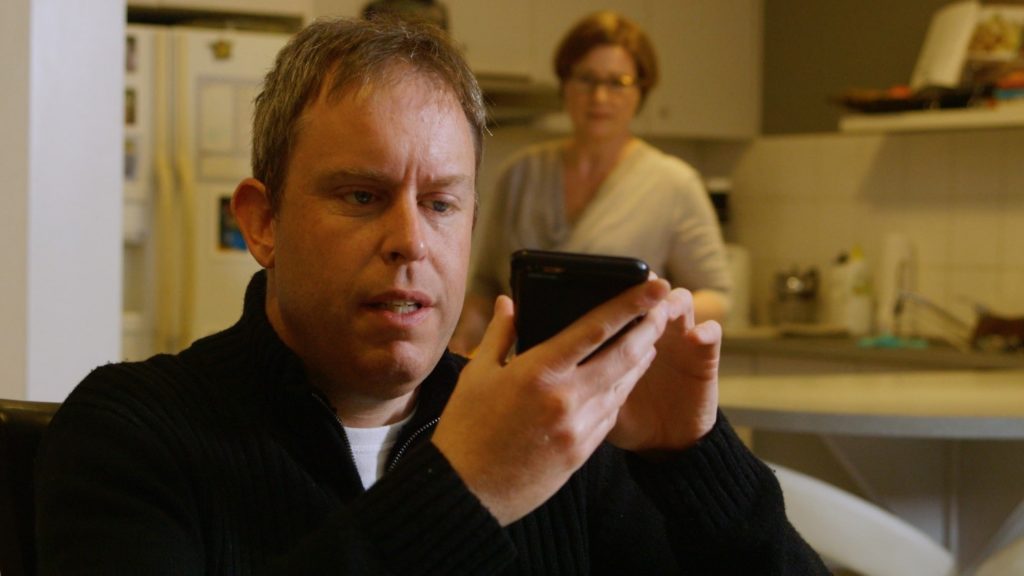Inclusion in action: Cameron shares why he believes it is an exciting time to be blind
Today, we head to Australia to meet Cameron. He is a university lecturer who believes that with Office 365 and Windows 10 facilitating interaction and collaboration, there’s never been a better time in history to be a blind person. Cameron’s story is part of our Inclusion in action series announced last month, highlighting how accessible technologies enable transformative change.
Here’s his story.
Spend a day with Cameron Roles, 42, and you will find out what it means to multitask. After he and his wife get their two sons off the school, he heads to work at the Australian National University College of Law.
“We get some of the best and brightest people in the country here at the ANU, and it’s a great opportunity for me to work with them,” said Cameron. “But it’s also a great opportunity through my research to try and critique the law and to try and reform it.”
As a senior lecturer, you might find him preparing or adding last minute touches to PowerPoint slides for an upcoming lecture. Or he may be correcting or grading papers. Cameron could also be fulfilling administrative tasks associated with a school with classes of up to 400 students.
In addition to his work at the university, Cameron is a Director with Vision Australia, Australia’s largest vision and blindness charity. For Cameron, it’s an important cause.
“I’m one of triplets, and we were born three months early. As a result of that, we needed to be given oxygen to keep us alive, but that oxygen actually caused all three of us to be blind,” Cameron said. “It’s never stopped us achieving what we wanted to do in life, and for me, I’ve never regarded it as a barrier.”
As a strong advocate for accessible technologies, Cameron began embracing the power of computing when he got his first PC as a teenager.
Cameron Roles is a university lecturer who uses accessible technologies personally and professionally.“I saw that as a pathway to be as productive as my sighted counterparts, and to suddenly be able to access a whole pile of information that I could never have accessed before.”
Now, new built-in accessibility features in Office 365 and Windows 10 are central to Cameron’s productivity. He uses comments in Microsoft Word with Narrator, the built-in screen reader in Windows 10, to provide feedback on assignments. Cameron uses Microsoft Word to create documents and research papers with footnotes, end notes and table of contents.
He combines those with heading styles to create documents that are formatted consistently and look professional to the sighted reviewer. He manages his busy schedule with Outlook, and he creates well-crafted PowerPoint presentations as visual aids to supplement his lectures.
Cameron is a huge fan of the new app specifically designed for those who are blind or low vision called Seeing AI, which is currently available in the United States, Canada, India, Hong Kong, New Zealand, and Singapore – and coming soon to more countries.

He likes the fact that he can point his phone at a product like peanut butter in his pantry, and have the app narrate to him what it is. He also likes that he can use Seeing AI to review an assignment question that one of his kids brings home from school since the tool can read aloud words, faces and objects.
“To me, it’s an example of Microsoft taking a leap forward and saying, ‘we’re going to try and step out and solve a problem using some of our research and our ability to innovate,’ and that’s exactly what they’ve done.”
Cameron thinks that these assistive technologies will play an important role not only for individuals, but society as a whole, empowering people to more easily access important content, while expanding the workforce to include a larger base of talented people.
“Now is definitely, in my view, the most exciting time in human history to be blind.”
Visit aka.ms/InclusionInAction to discover more stories of people pushing the boundaries of productivity and inclusion with Microsoft technologies.








